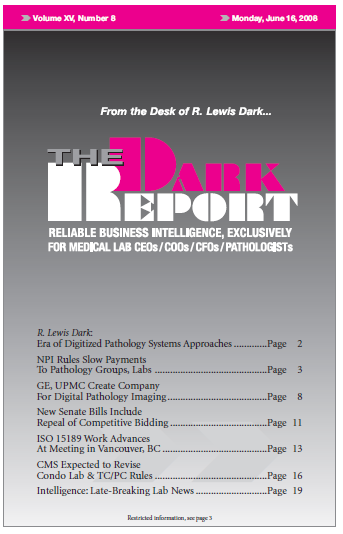CEO SUMMARY: It’s a new joint venture with the potential to transform surgical pathology. General Electric Healthcare has extensive experience at supporting physicians’ work flow with digitized imaging systems, plus ample experience with molecular bio-markers. The University of Pittsburgh Medical Center’s pathology department is a world leader in whole-slide imaging and digitized pathology systems. Together, …
GE, UPMC Create Company for Digital Path Imaging Read More »
To access this post, you must purchase The Dark Report.


